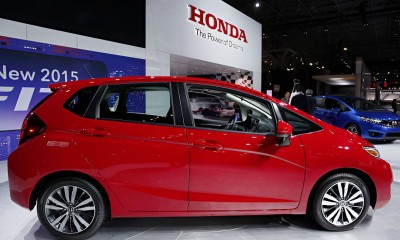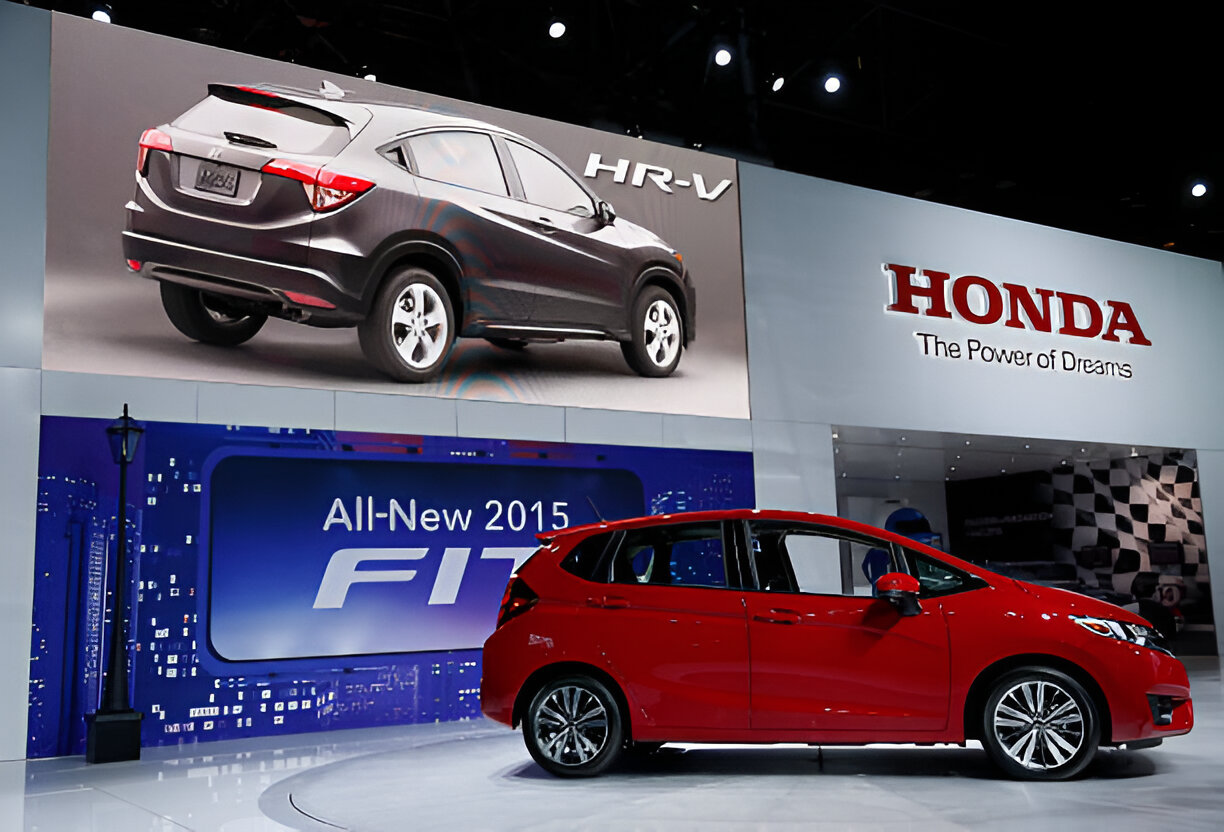Honda Fit & Jazz 2024: A Complete Guide to ECU Tuning & Performance Gains

For years, the Honda Fit has held a celebrated status within the global tuning community. Its lightweight chassis, remarkable practicality, and the responsive, reliable performance of its L-series engines have made it a beloved project car for enthusiasts and a profitable platform for professional tuning workshops. This legacy has created persistent demand and interest, leading many to search for a "Honda Fit 2024."
However, it is crucial to address the current market reality directly. In North America, Honda officially discontinued the Fit after the 2020 model year. This decision was driven by a significant market shift away from the subcompact car segment towards small SUVs, with Honda increasing production of its HR-V model to meet this evolving consumer demand. While enthusiasts in the region hold out hope for its return, there is no 2024 Honda Fit available in the North American market.
Globally, the story is different. The vehicle's lineage continues with the fourth-generation model (GR/GS platform), which is actively produced and sold in key markets across Europe, Japan, and Asia. In these regions, the car is known as the Honda Jazz. The 2024 Honda Jazz introduces a significant technological evolution: its primary powertrain is the advanced e:HEV hybrid system. This presents both a new challenge and a unique opportunity for the tuning industry, representing a distinct paradigm compared to the petrol-powered predecessors that built the Fit's performance reputation.
This comprehensive guide will provide a definitive overview for tuning professionals and enthusiasts. We will first conduct a technical deep dive into the 2024 Honda Jazz e:HEV, exploring its unique powertrain and the nuanced approach required for its optimization. Subsequently, we will provide a detailed analysis of the immense tuning potential held by the widely popular and highly modifiable previous-generation petrol-powered Honda Fit models.
The 2024 Honda Jazz e:HEV: A Technical Deep Dive for Tuners
To effectively tune the 2024 Honda Jazz, professionals must first understand the sophisticated engineering of its e:HEV powertrain. Built on the Honda Global Small Car platform (GR/GS series), the fourth-generation Jazz is a technological leap forward, sharing architectural DNA with the latest Honda City and HR-V models. 
The e:HEV Powertrain Explained
At the heart of the 2024 Jazz is Honda's intelligent Multi-Mode Drive (i-MMD) system, a two-motor full hybrid setup that operates fundamentally differently from traditional petrol-powered vehicles. The system intelligently and seamlessly switches between three distinct drive modes to maximize efficiency and performance without any driver intervention. Understanding these modes is critical for any tuning consideration.
-
EV Drive: In low-speed urban driving and from a standstill, the vehicle operates as a pure electric vehicle. The petrol engine is completely off, and the wheels are driven exclusively by the electric traction motor, which draws power from the lithium-ion battery pack. This provides silent operation and instant torque.
-
Hybrid Drive: During most normal driving conditions and for strong acceleration, the system functions as a series hybrid. The 1.5L petrol engine runs, but it is not connected to the wheels. Instead, its sole purpose is to power a generator motor, which produces electricity. This electricity is then sent to the traction motor to drive the wheels, with any excess energy used to recharge the battery. This allows the engine to operate within its most efficient RPM range, independent of wheel speed.
-
Engine Drive: At higher, consistent cruising speeds (e.g., on a motorway), where a petrol engine is typically most efficient, a lock-up clutch engages to connect the engine directly to the wheels. In this mode, the Jazz operates like a parallel hybrid, with the engine providing primary propulsion. The electric motor can assist with a power boost when needed, such as during overtaking maneuvers.
This architecture means that for a significant portion of its operational range, the petrol engine's output does not directly correlate with the force applied to the wheels. Instead, it acts as a power plant for the electric drive system. This distinction is the single most important factor for tuners to grasp, as it redefines the objectives and outcomes of an ECU remap.
Engine and Motor Specifications
The 2024 Honda Jazz e:HEV powertrain is a combination of a highly efficient Atkinson-cycle petrol engine and two powerful electric motors. While specifications can vary slightly by market and trim, the core components are consistent globally.
|
Component |
Specification |
Value (Power) |
Value (Torque) |
|
Internal Combustion Engine |
1.5L DOHC i-VTEC Atkinson-cycle |
78 kW / 106 PS |
127 Nm |
|
Engine Code |
LEB8 / L15ZF |
||
|
Electric Traction Motor |
AC Permanent Magnet Synchronous |
90 kW / 122 PS |
253 Nm |
|
Total System Output |
Combined e:HEV System |
Approx. 90 kW / 122 PS |
253 Nm |
|
Transmission |
e-CVT (Fixed Gear) |
N/A |
N/A |
Data compiled from sources.
The key takeaway from these specifications is the torque contribution of the electric motor. With 253 Nm available from 0 RPM, the electric motor is responsible for the vehicle's responsive, off-the-line acceleration, a characteristic that tuning can further enhance.
The Art and Science of Professional ECU Remapping
Before exploring the specific tuning potential of the Honda Fit and Jazz, it is essential to establish the principles of professional Engine Control Unit (ECU) remapping. An ECU remap, also known as chiptuning, is a sophisticated process that involves modifying the control software, or "maps," stored on a vehicle's ECU to optimize engine performance. This process is fundamentally different from and superior to plug-in "tuning boxes," which merely intercept and manipulate sensor signals without altering the core logic of the ECU.
The Professional Tuning Process
A high-quality, reliable remap is the result of a meticulous engineering process, not a simple software tweak. At HP Chiptuningfiles, this process is built on a foundation of data, testing, and expertise.
-
Reading the Original ECU Data: The first step is to establish a connection with the vehicle's ECU using specialized, professional-grade hardware. The original factory software file is carefully read and backed up. The Honda Fit and Jazz have utilized various ECU models over the years, including Keihin units with specific part numbers like 37820-6Y0-E53 and 37821-6Y0-W00, each requiring the correct tools and protocols for access.
-
Modifying the Maps: Our engineers analyze the original file, identifying dozens of key parameter maps. These maps control every aspect of the engine's operation. For a petrol engine, this includes ignition timing advance, fuel injection volume and pressure, air-to-fuel ratio (Lambda) targets, and electronic throttle response. For a hybrid system, this extends to the logic governing the interaction between the ICE and electric motors.
-
Dynamometer Development and Testing: This is the most critical stage and what separates professional tuning files from amateur ones. Every modification is developed and validated on a chassis dynamometer, or "dyno." This allows for precise, repeatable measurement of horsepower and torque output across the entire RPM range. More importantly, it enables our engineers to monitor critical engine parameters like exhaust gas temperature and engine knock to ensure that all adjustments remain well within the safe mechanical limits of the engine and drivetrain components.
-
Writing the Modified File: Once the new map has been perfected and proven safe and effective on the dyno, the modified file is written back to the vehicle's ECU. The result is optimized performance that works in harmony with the vehicle's original systems.
This data-driven, safety-conscious approach ensures that a professional remap delivers reliable power and an enhanced driving experience, protecting the investment of both the tuning workshop and the end customer.
Tuning the 2024 Honda Jazz e:HEV: A New Frontier
Tuning the 2024 Honda Jazz e:HEV requires a paradigm shift from traditional performance modification. Due to the i-MMD system's architecture, where the engine often acts as a generator rather than a direct power source, the primary goal of an ECU remap is not a dramatic increase in peak horsepower. Instead, the focus is on optimizing the complex control logic to enhance the overall driving experience.
For tuning professionals, this represents an opportunity to offer a sophisticated product to a new market segment. By educating customers on the true benefits, workshops can tap into the growing demand for improved hybrid vehicle performance.
Primary Tuning Goals and Expected Outcomes
-
Improved Throttle Response: The most significant and immediate benefit of an e:HEV remap is a sharper, more direct throttle response. Factory calibrations are often programmed for maximum fuel economy, which can result in a feeling of hesitation or "lag" upon acceleration. A professional remap can recalibrate the electronic throttle maps and the power request logic to deliver a more instantaneous and engaging response to driver input.
-
Optimized Power Delivery: An ECU remap can refine the strategy for how and when the petrol engine activates to support the electric motor. By adjusting these parameters, the transition between EV, Hybrid, and Engine drive modes can be made smoother, and the combined power delivery during acceleration can feel more robust and linear. This is particularly effective in the vehicle's "Sport" mode, providing a distinctly more athletic character.
-
Enhanced Drivability and Refinement: The ultimate goal is a more refined and enjoyable drive. The remap aims to make the car feel more connected and responsive, transforming its character from a pure economy vehicle to a nimble and spirited hatchback. This qualitative improvement is the core value proposition for the Jazz e:HEV owner.
While some minor gains in peak system output may be realized through optimized engine generator efficiency, they are a secondary benefit. The true value lies in unlocking a more dynamic personality hidden within the stock calibration.
The Enthusiast's Canvas: Unleashing the Petrol-Powered Honda Fit (GK/GE)
While the new Jazz e:HEV presents a new frontier, the second-generation (GE, 2009-2013) and third-generation (GK, 2015-2020) Honda Fit models remain the heartland of the tuning scene. These vehicles, equipped with robust and responsive naturally aspirated 1.5L L-series petrol engines, offer a clear and rewarding path for performance enhancement. For tuning workshops, these models represent a significant and well-understood market.
The key to unlocking their potential lies in a staged approach, where an ECU remap is the central component that leverages the full benefit of any hardware modifications.
Stage 1: The Foundation of Performance
A Stage 1 tune is the essential first step for any Honda Fit owner seeking improved performance. This modification involves a pure software upgrade to the ECU, with no hardware changes required.
-
Process: The vehicle's original ECU map is read and optimized by our engineers.
-
Gains: The results are immediate and transformative. Drivers will experience a much sharper throttle response, the elimination of flat spots in the powerband, and a stronger pull across the entire RPM range. For the direct-injection 1.5L L15B engine in the GK5 Fit, a Stage 1 remap can yield an increase of 8-12 horsepower and 10-15 Nm of torque at the wheels. Dyno tests on stock vehicles typically show around 116 wheel horsepower (whp), which can be elevated to approximately 125 whp with a quality remap and basic bolt-on modifications.
Stage 2 & Stage 3: Maximizing Airflow and Power
For enthusiasts seeking the maximum possible performance from the naturally aspirated engine, Stage 2 and Stage 3 tunes are the answer. These stages build upon the foundation of the Stage 1 remap by incorporating hardware upgrades designed to improve the engine's ability to breathe.
-
Required Hardware: To increase airflow, a series of bolt-on components are necessary. Common and effective upgrades include:
-
Cold Air Intake (CAI): Replaces the restrictive factory airbox to allow cooler, denser air into the engine.
-
High-Flow Exhaust Manifold/Header: Replaces the stock manifold with a less restrictive design to improve the flow of exhaust gases out of the cylinders.
-
Performance Cat-Back Exhaust System: A larger diameter exhaust system from the catalytic converter back reduces backpressure, further enhancing exhaust flow.
-
-
The Necessity of a Custom Remap: Installing these hardware components without a corresponding ECU remap is counterproductive. The engine's factory calibration is not designed for this increased airflow, which can lead to an incorrect air-fuel ratio, poor performance, and potentially engine-damaging lean conditions. A custom Stage 2 or Stage 3 file from HP Chiptuningfiles is essential to recalibrate the fueling, ignition, and throttle parameters to take full advantage of the new hardware, ensuring both maximum power and continued engine safety.
The following table provides a clear upgrade path for the popular third-generation Honda Fit (GK5), demonstrating how software and hardware work together to achieve significant performance gains.
|
Tuning Stage |
Typical HP Gain (at wheels) |
Typical Torque (Nm) Gain |
Required Modifications |
|
Stock |
Baseline (~115 whp) |
Baseline (~140 Nm) |
None |
|
Stage 1 |
+8 to 12 whp |
+10 to 15 Nm |
HP Chiptuningfiles Stage 1 ECU Remap |
|
Stage 2 |
+15 to 25+ whp |
+20 to 30+ Nm |
Stage 1 Remap + Cold Air Intake, High-Flow Exhaust Manifold, Cat-Back Exhaust System, Custom Stage 2 ECU Remap |
Performance gains are estimates based on dyno results and community data for the 1.5L L15B engine. Actual results may vary based on vehicle condition, fuel quality, and dynamometer type. Data compiled from sources.
Why Choose HP Chiptuningfiles for Your Honda Tuning Needs?
For professional tuning workshops and dealers, the quality and reliability of your tuning files are paramount to your reputation and success. As Europe's leading provider of custom, dyno-tested ECU tuning files, HP Chiptuningfiles is the trusted partner for over 4,000 clients worldwide.
-
Unmatched Expertise and Reliability: Our team of engineers possesses deep expertise in a vast range of engine and ECU types, from the latest complex hybrid systems in the 2024 Honda Jazz to the enthusiast-favorite petrol engines of the classic Honda Fit.
-
Rigorous Quality Assurance: We do not provide generic or off-the-shelf files. Every chiptuning file we deliver is custom-developed and meticulously tested on a state-of-the-art dynamometer. This ensures that our files deliver proven performance gains while operating safely within the mechanical tolerances of the vehicle.
-
Comprehensive B2B Support: We are built to support your business. Our extensive tuning-file database offers instant access to files for thousands of vehicles. We provide competitive prices for our B2B partners, enabling you to offer high-quality tuning services profitably. Our expert support team is always available to assist with any technical queries.
By partnering with HP Chiptuningfiles, you equip your business with the highest quality product, ensuring customer satisfaction and building a reputation for excellence.
Ready to elevate your tuning services?(https://hp-chiptuningfiles.com/b2b) to access our full database and dealer pricing.
The Professional's Toolkit: Hardware for ECU Remapping
Delivering a professional ECU remapping service requires the right tools. HP Chiptuningfiles supports our B2B partners not only with superior software but also by providing access to the industry's best tuning hardware.
We offer a curated selection of industry-standard tools for reading and writing ECU data. It is important to understand the two main types of tools available:
-
Master Tools: These tools provide the ability to read the original ECU file and write a modified one. Crucially, they allow the user to open and edit the file that has been read. This is the tool for experienced tuners who develop their own files.
-
Slave Tools: These tools can also read and write files to the ECU, but the files they read are encrypted and can only be opened and modified by the specific Master tool they are linked to. This is the perfect, cost-effective solution for workshops that partner with a file provider like HP Chiptuningfiles. You can safely read the client's vehicle data, send the encrypted file to us, and we will return a professionally modified file ready for you to write back to the vehicle.
Equip your workshop with the best. Explore our range of professional tuning hardware to find the right solution for your business.
Conclusion: The Dual Legacy of Honda Fit/Jazz Tuning
The Honda Fit and its global successor, the Jazz, offer two distinct but equally compelling opportunities for the modern tuning workshop. The 2024 Honda Jazz e:HEV represents the future, where tuning is a sophisticated art of optimizing complex hybrid systems to enhance drivability, response, and driver engagement. Success in this arena requires deep technical understanding and precisely engineered software that respects the intricate interplay of its components.
Simultaneously, the classic petrol-powered Honda Fit models, particularly the GE and GK generations, remain a cornerstone of the enthusiast market. Their simple, robust L-series engines provide a perfect canvas for traditional performance tuning, with a clear, proven path to significant power gains through a combination of hardware upgrades and expert ECU recalibration.
HP Chiptuningfiles stands at the intersection of these two worlds. With our commitment to custom, dyno-developed files and comprehensive support, we provide our B2B partners with the industry-leading solutions needed to expertly service both the emerging hybrid market and the established enthusiast community. We empower you to deliver safe, reliable, and impressive results for every generation of this iconic vehicle.
To learn more about our services or to get started, contact our expert support team or explore our comprehensive tuning file database today.
Frequently Asked Questions (FAQ)
Is the Honda Fit coming back in 2024?
No, the Honda Fit was discontinued for the North American market after the 2020 model year and is not available as a 2024 model. However, the fourth-generation model continues to be sold globally as the 2024 Honda Jazz, primarily with an e:HEV hybrid powertrain.
What are the real benefits of an ECU remap on a Honda Jazz e:HEV?
The primary benefits of an ECU remap on the hybrid Honda Jazz e:HEV are a significantly improved throttle response, smoother power delivery during transitions between the electric motor and petrol engine, and a more engaging, sporty driving experience. While minor efficiency or power gains are possible, the main focus is on enhancing overall drivability.
How much power can a Stage 1 tune add to a third-generation Honda Fit (GK5)?
A professional Stage 1 ECU remap on a naturally aspirated 1.5L Honda Fit (GK5) can typically add between 8 to 12 horsepower and 10 to 15 Nm of torque at the wheels. Beyond the peak numbers, it also provides a much sharper throttle response and a more linear powerband.
Is chiptuning safe for my Honda engine?
Yes, chiptuning is completely safe when performed by professionals using custom, dyno-tested tuning files like those from HP Chiptuningfiles. Our files are meticulously engineered to optimize performance while operating within the safe mechanical and thermal limits of the engine and powertrain components, ensuring that performance is enhanced without sacrificing long-term reliability.
Other news and updates

Read more OBD Breakthrough: Tuning Support for the Continental ASG1 ECU in Audi e-tron & Porsche Taycan
The Continental ASG1 ECU used in the Audi e-tron and Porsche Taycan is now fully supported for OBD read/write. This breakthrough allows safe tuning of torque limits, current maps, thermal strategies and pedal response, enabling measurable performance gains whi...
Read more

Read more Stage 1, Stage 2, and Stage 3 Tuning: Which One Is Right for You? | HP Chiptuning Files Europe & UK
Discover the differences between Stage 1, Stage 2, and Stage 3 tuning. Learn which remap is best for your car, driving style, and budget at hp-chiptuningfiles.com.
Read more

Read more Mercedes-AMG G63 2025: ECU Remap & Performance Boost
Hey, we are HP Chiptuningfiles – Europe’s leading ECU tuning file service provider. We deliver custom, dyno-tested tuning files for diesel, petrol & hybrid engines, trusted by 4,000+ clients worldwide. The 2025 Mercedes-AMG G63 combines iconic G-Class ruggedne...
Read more